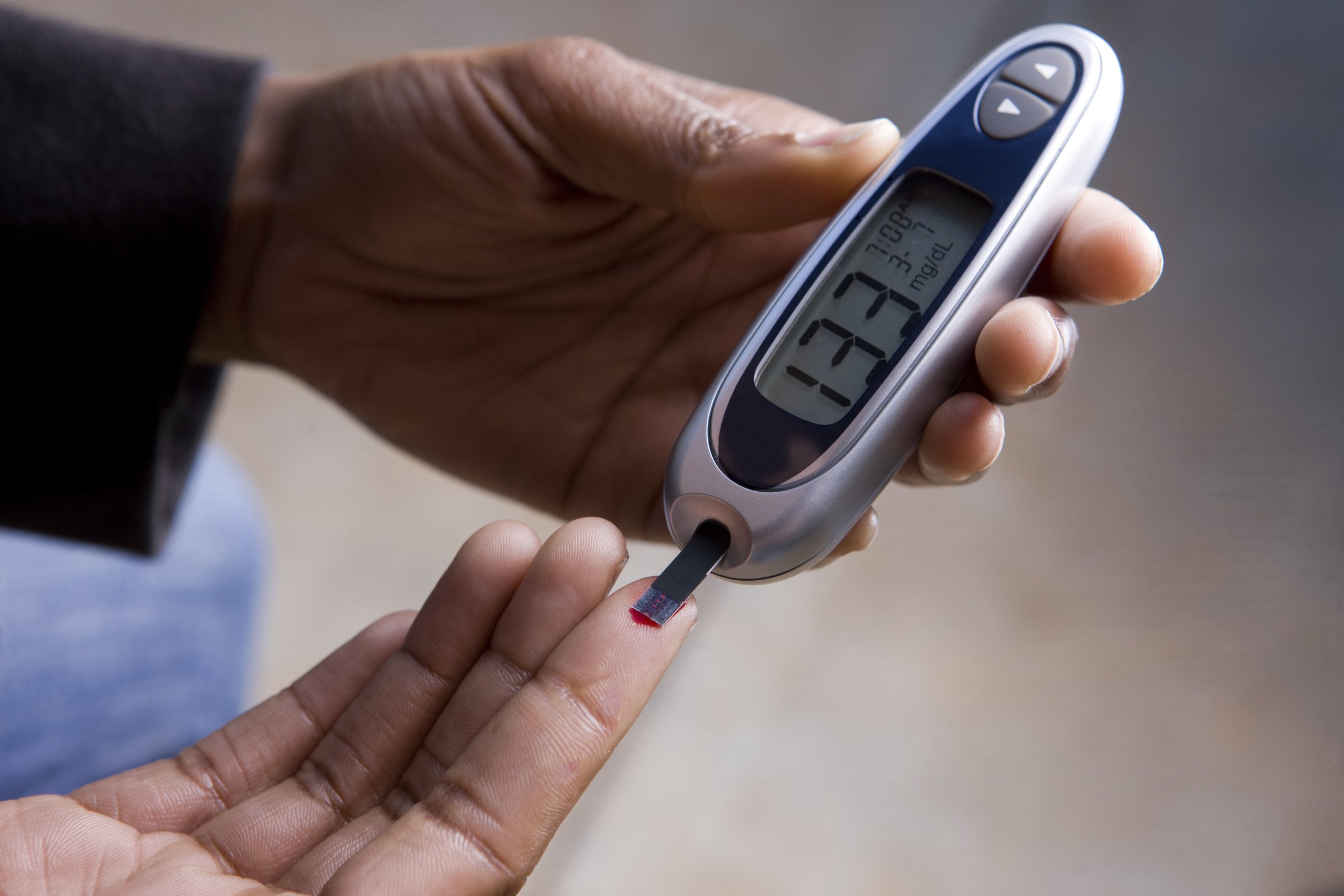
Black type-2 diabetes patients are three times more likely to lose a leg to amputation as non-black patients, finds a new report from the Dartmouth Atlas Project. That’s partly because they’re also far less likely to get preventative care like foot exams, cholesterol testing and blood sugar testing.
Researchers looked at Medicare claims from 2007-2011 from patients diagnosed with diabetes and peripheral arterial disease, a condition in which plaque builds up in the arteries and blocks blood flow, primarily in the legs. They found significant disparities, both racial and regional: black patients and the rural Southeast region of the U.S. both saw elevated amputation rates.
Diabetes-related amputation, a last resort, generally results from wounds on the feet and poor circulation. Foot exams and testing for blood sugar and cholesterol levels can help lower the risk of having to resort to extreme measures. But in 2010, 75% of diagnosed black diabetics received a a blood lipids test, while 82% of non-black patients had the test.
An average of 2.4 leg amputations for every 1,000 Medicare patients with diabetes and peripheral arterial disease happen nationally, but regionally, the situation is much more grim. Mississippi, which currently ties West Virginia for the most obese state, also has some of the highest amputation rates—6.2 per 1,000 patients in the city of Tupelo. It’s not just racial: For every 1,000 black Medicare beneficiaries with diabetes, 14.2 amputations occurred in the Mississippi city of Meridian, but only 2.1 occurred among black patients in San Diego.
“The resources needed to prevent amputation are currently severely misaligned,” says co-author Philip Goodney, MD, director of the Center for the Evaluation of Surgical Care at Dartmouth Hitchcock Medical Center. “While we must look for opportunities to expand education and preventive care for all patients at risk for amputation, it seems clear to us that we can make the greatest gains by focusing on African-American patients in the highest risk regions, typically in the poor rural regions of the Southern United States, where the highest amputation rates remain.”
More Must-Reads from TIME
- Donald Trump Is TIME's 2024 Person of the Year
- Why We Chose Trump as Person of the Year
- Is Intermittent Fasting Good or Bad for You?
- The 100 Must-Read Books of 2024
- The 20 Best Christmas TV Episodes
- Column: If Optimism Feels Ridiculous Now, Try Hope
- The Future of Climate Action Is Trade Policy
- Merle Bombardieri Is Helping People Make the Baby Decision
Write to Mandy Oaklander at mandy.oaklander@time.com